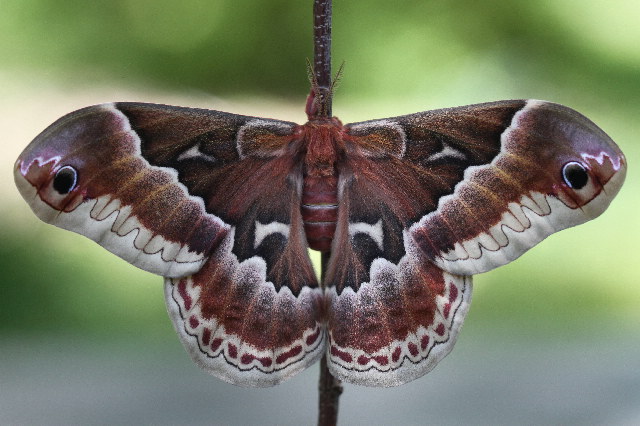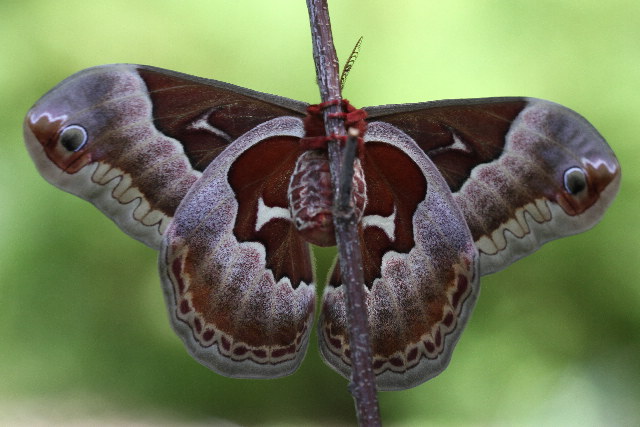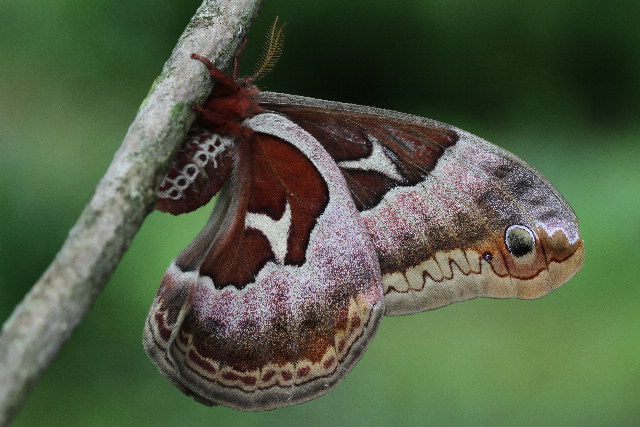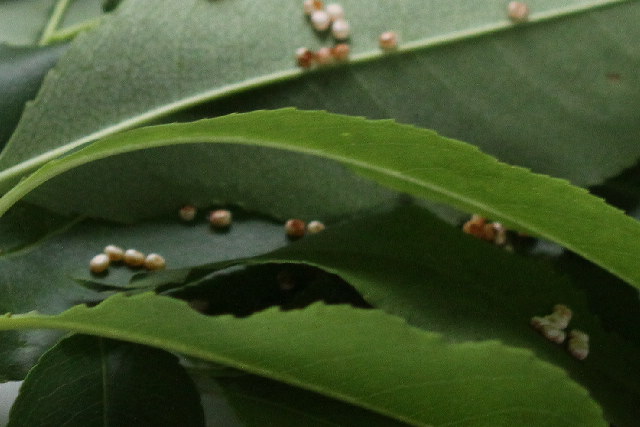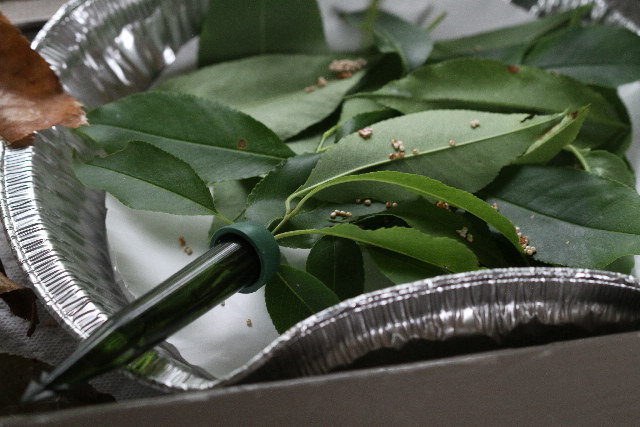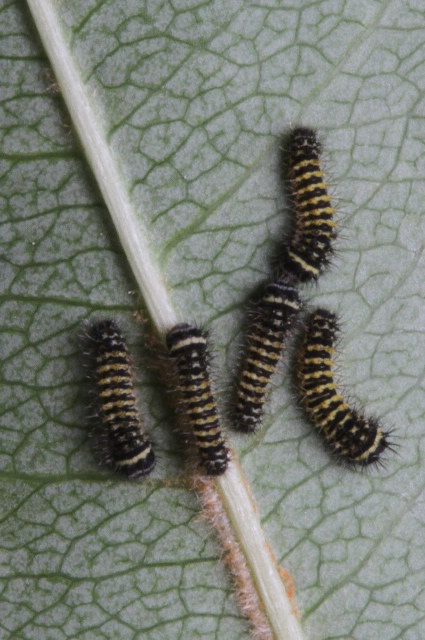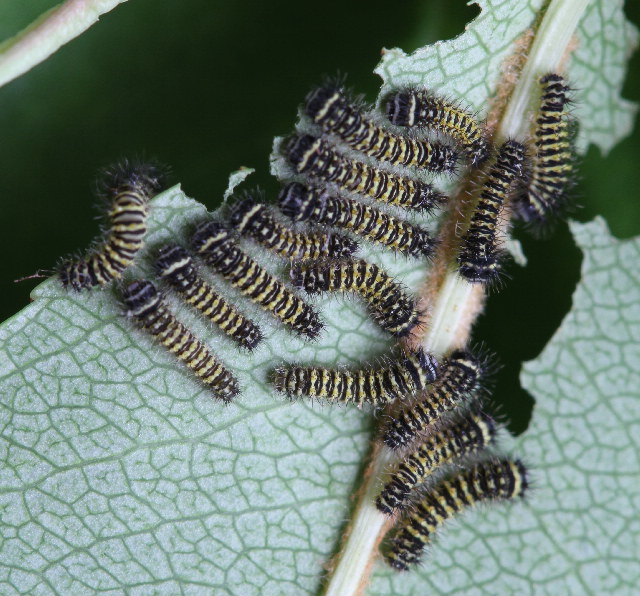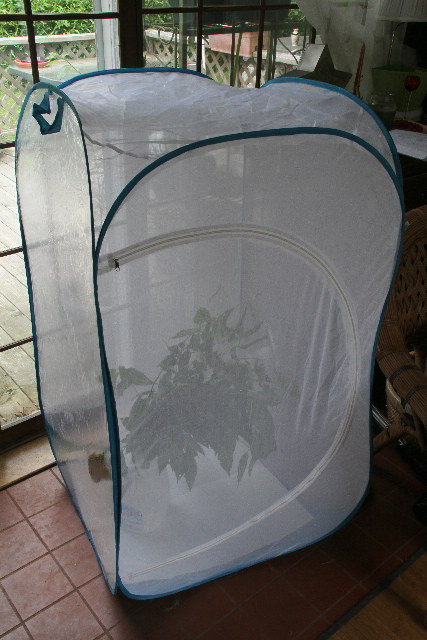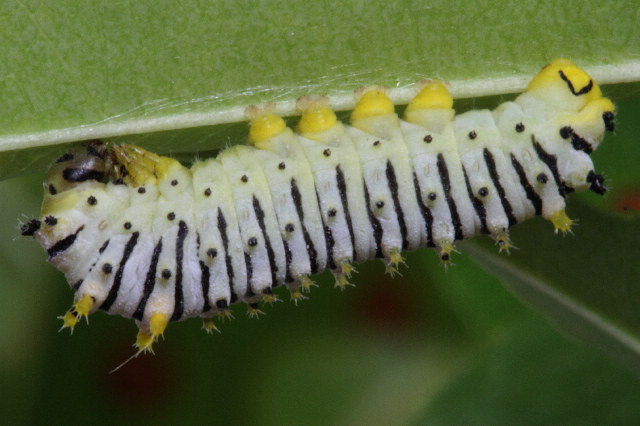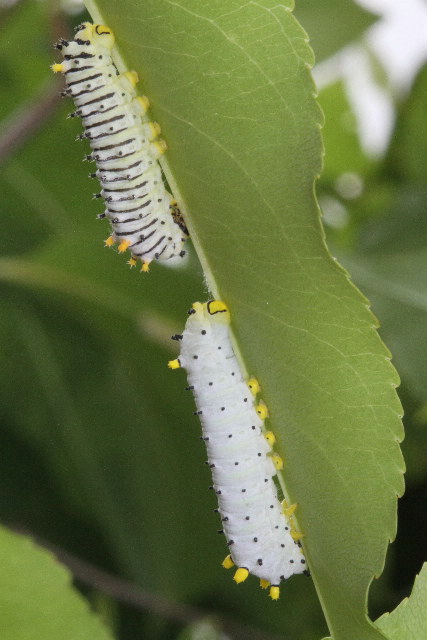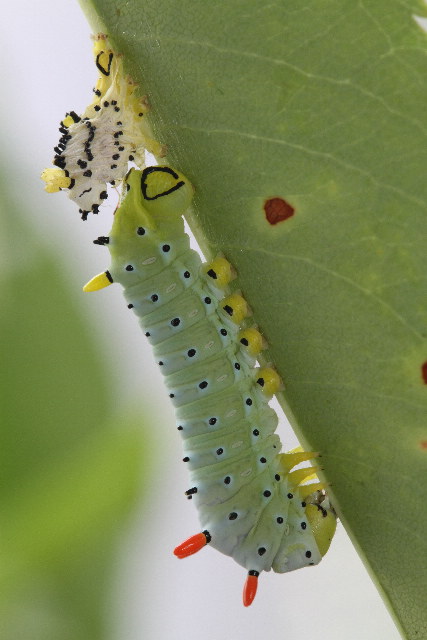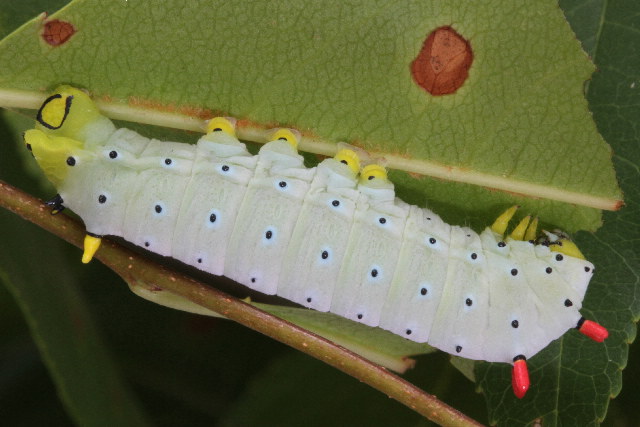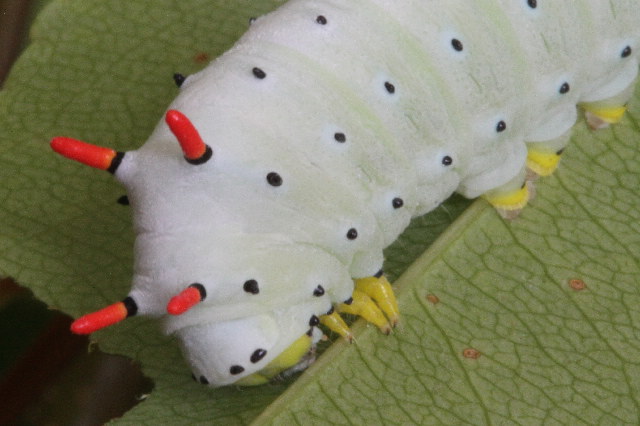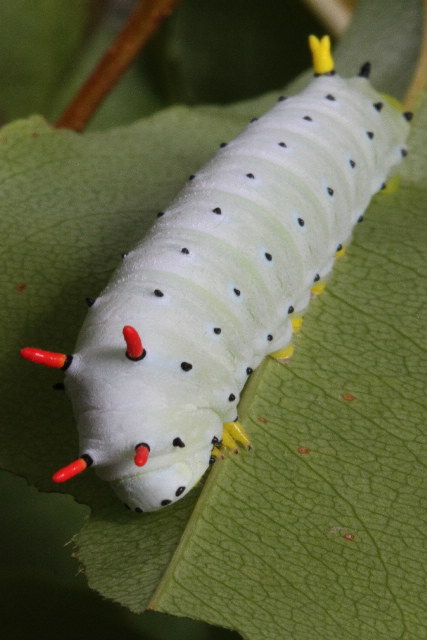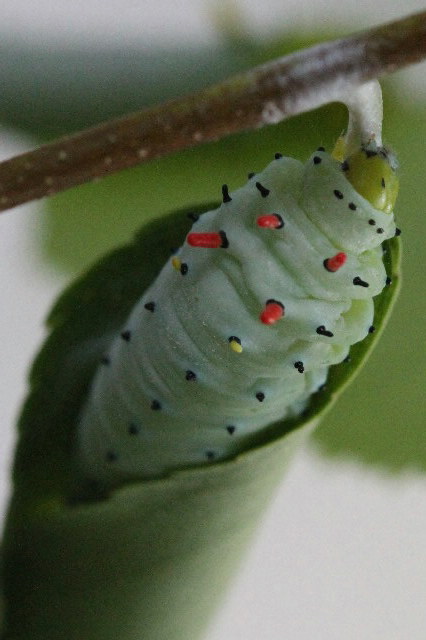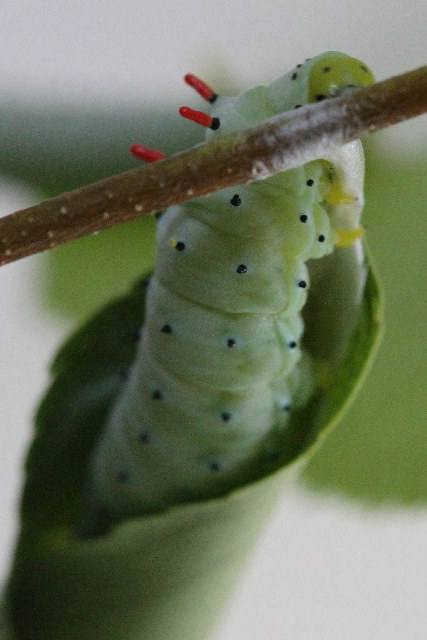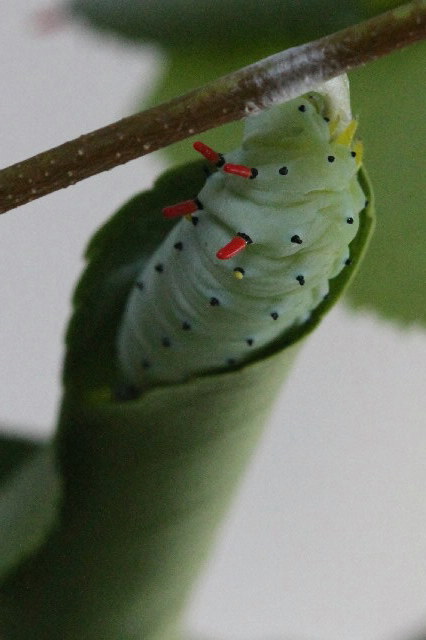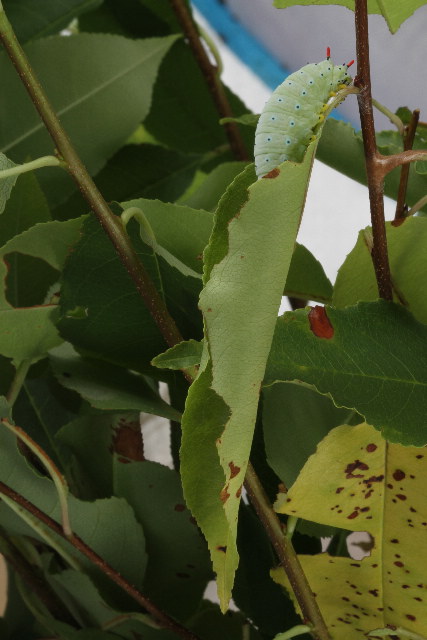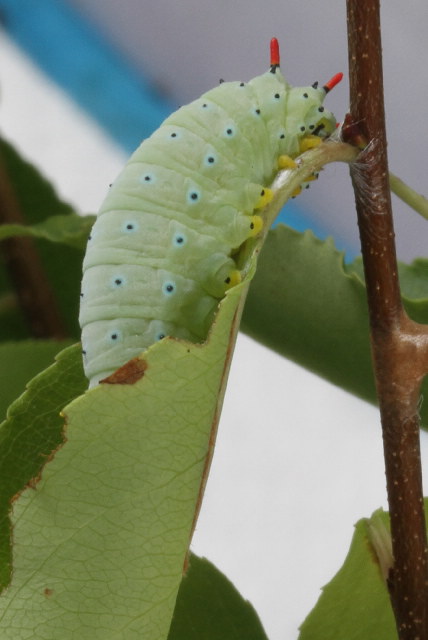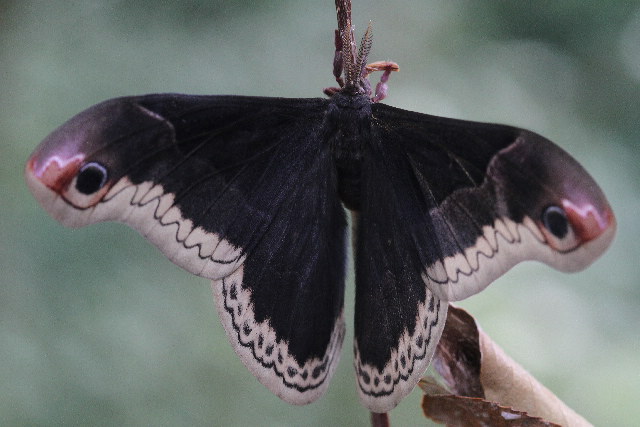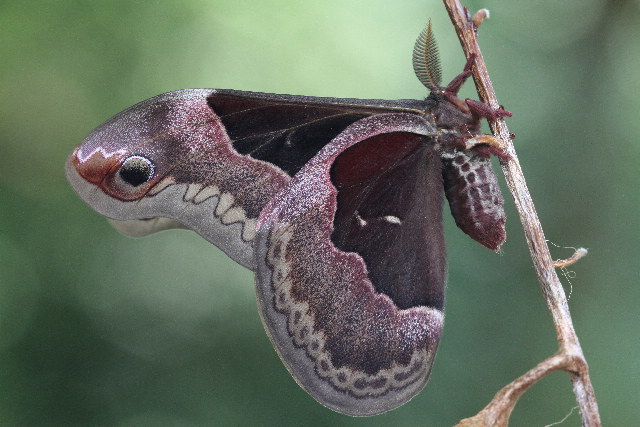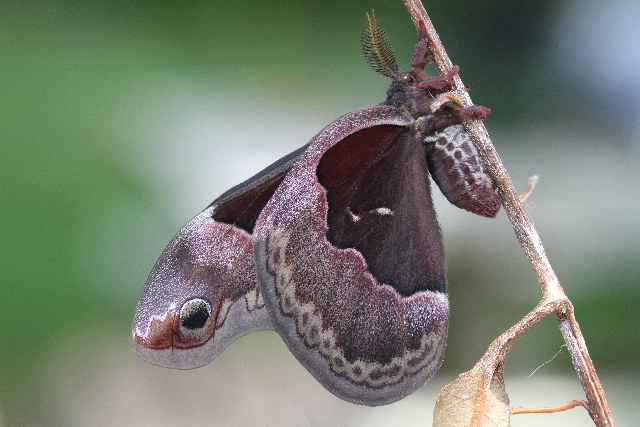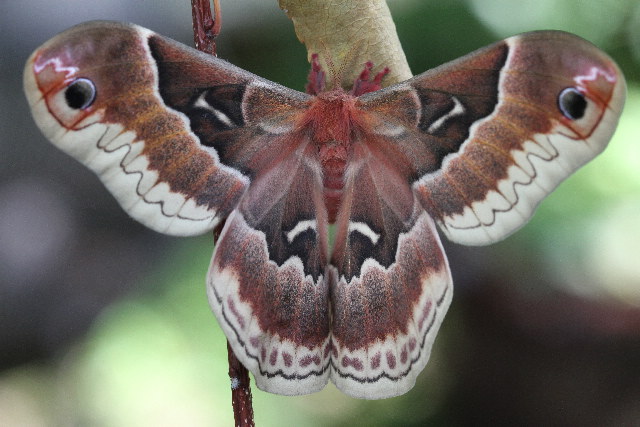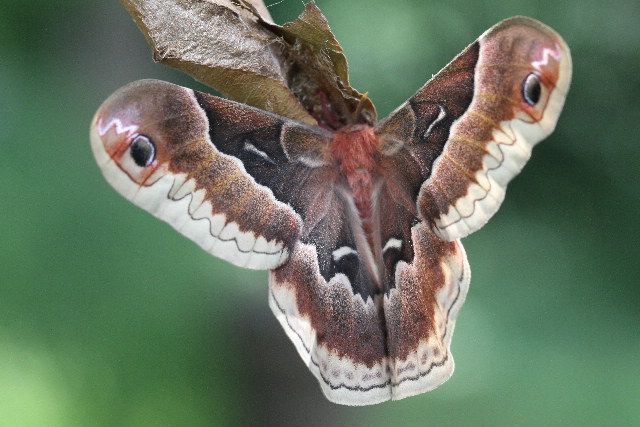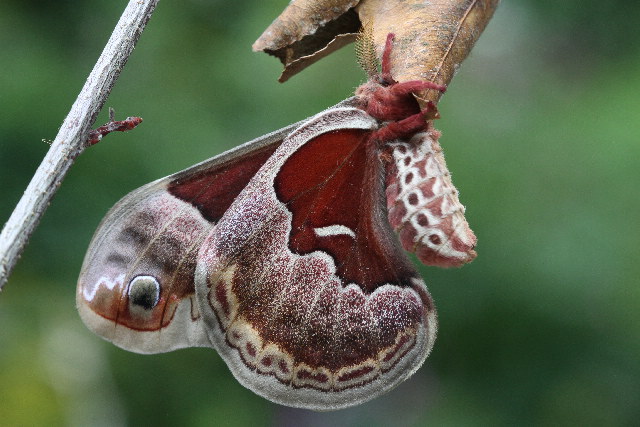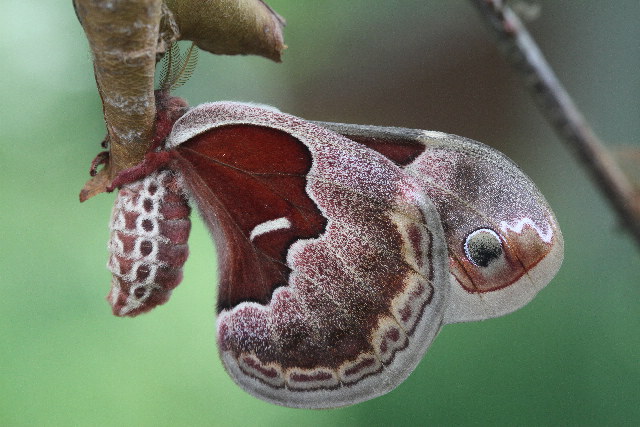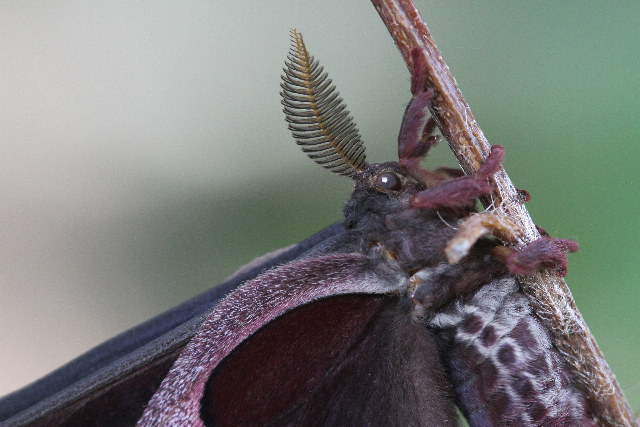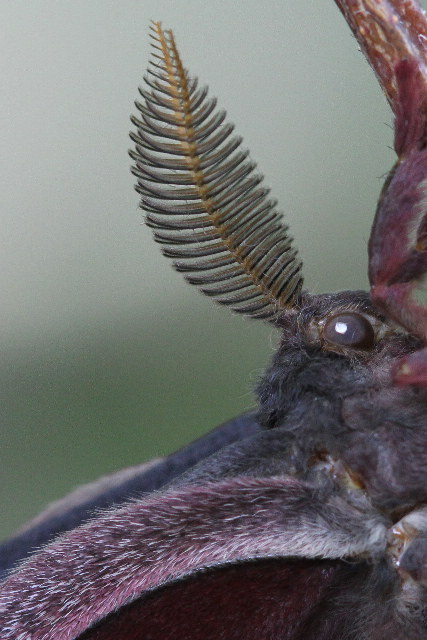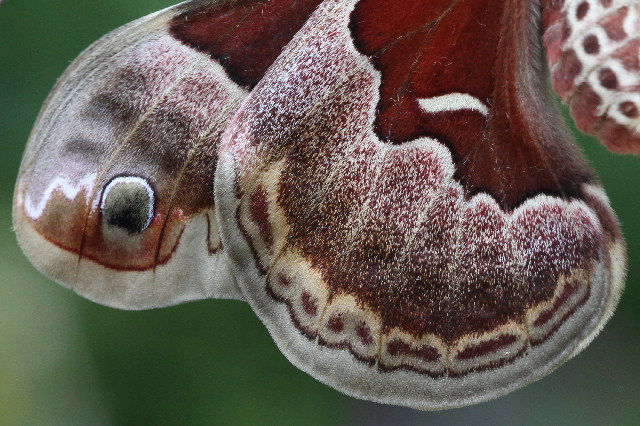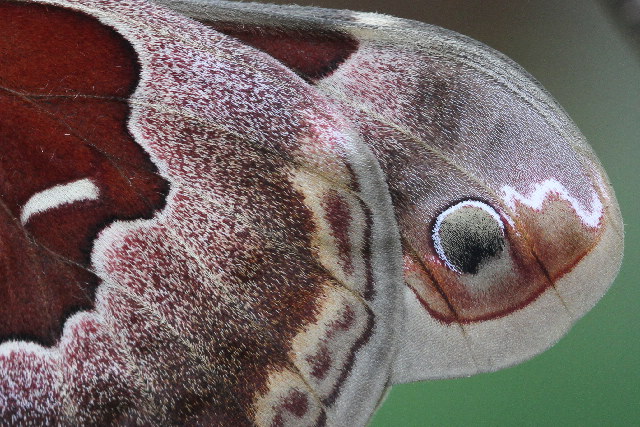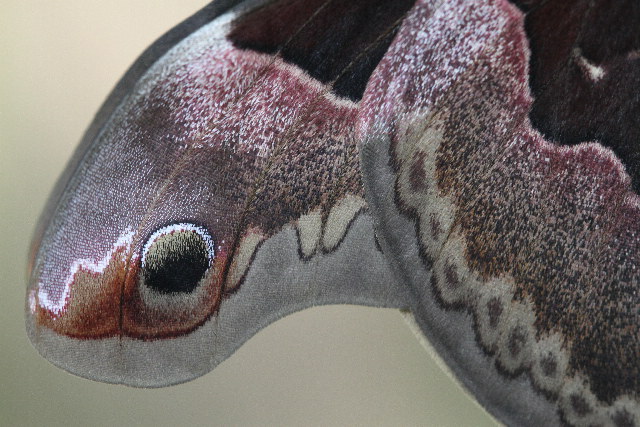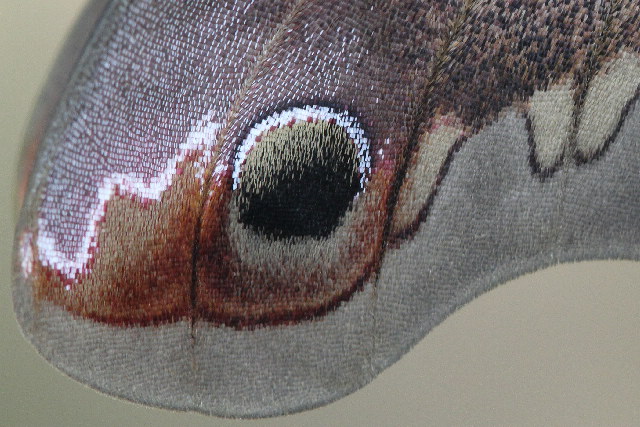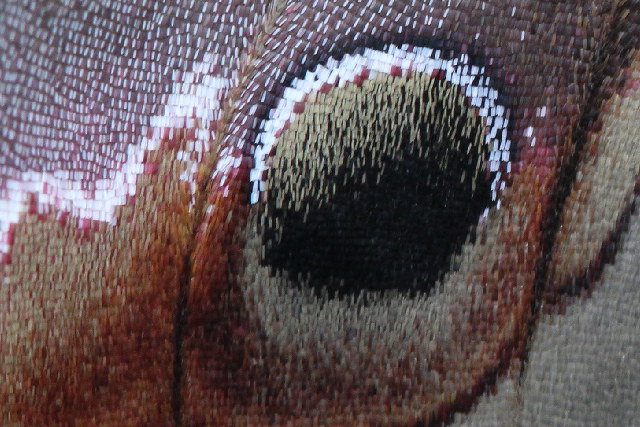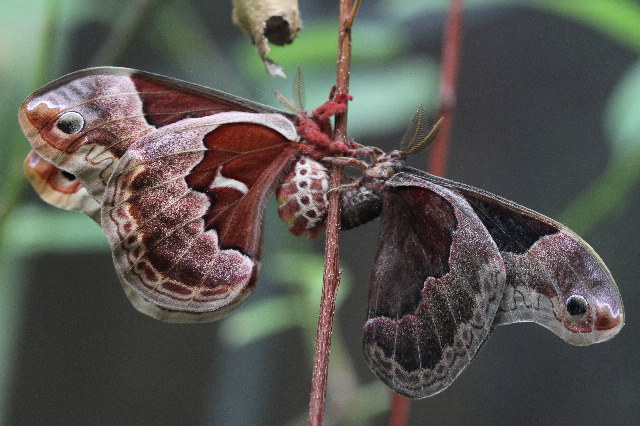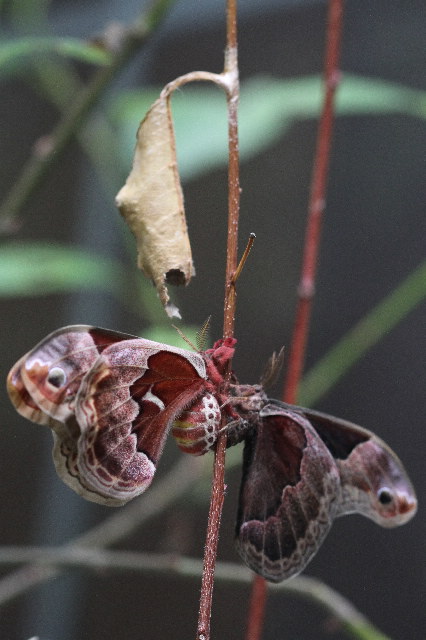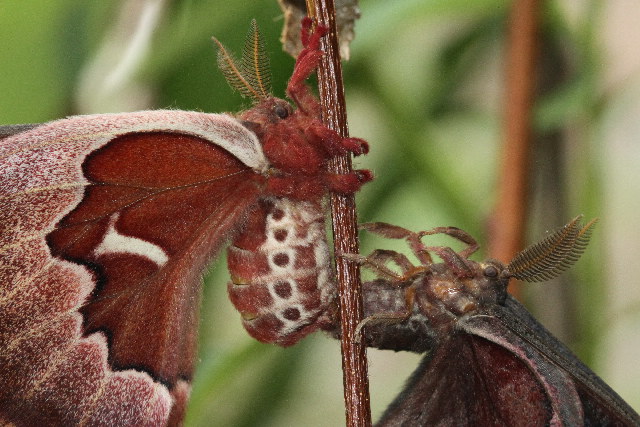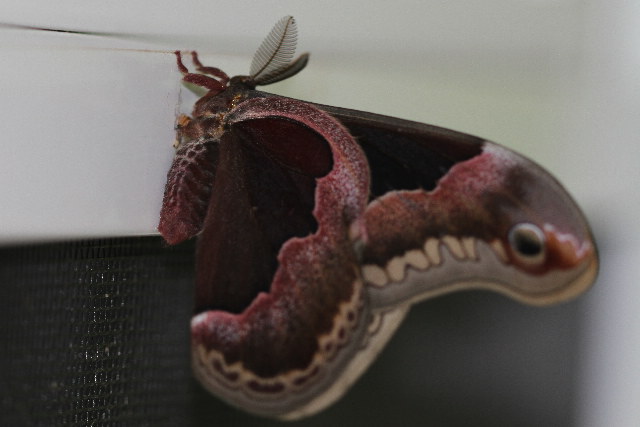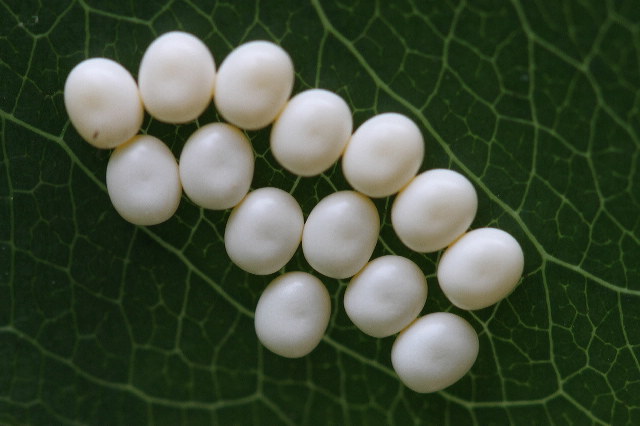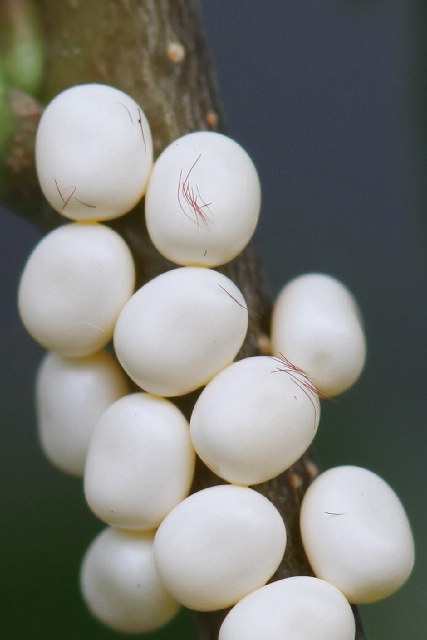Promethea Moth (Callosamia promethea) - Life Cycle 2010 Stan Malcolm Photos and Videos |
Along the Air Line... Promethea Menu |
June 2nd. Newly emerged female. |
Female underside. |
|
Eggs deposited on scrub cherry leaves. |
Leaves were kept moist with a floral tube water supply and contained in a pie plate. Once hatched, the caterpillars and the leaves they were on were inserted into bunches of cherry branches where they could transfer themselves to fresh leaves. |
June 17th. Caterpillars shortly after hatching. About 3mm long. |
Several days later, at 5mm. When young, the caterpillars feed as a group. |
Collapsible rearing cage with easy zipper access from Nasco. Large enough to hold four 1-gallon milk jugs with cherry branch "bouquets". |
After a molt, the caterpillars look quite different but are still spiny and striped. |
They gradually lose their spines and stripes. |
After the final molt, the caterpillars have orange-red tubercles on the 2nd and 3rd thoracic segments. Note the shed skin that the caterpillar has just stepped out of. |
|
|
|
Promethea caterpillar spinning cocoon. 7-15-10 (Normal Speed) |
Promethea caterpillar spinning cocoon - Part 1. Rolling Leaf. (Time-Lapse - 1hr 14min). Recorded at 1 frame every 3 seconds and played back at 24 fps (frames per second). |
Promethea caterpillar spinning cocoon - Same as Part 1, above, but slowed to 15 fps. |
Promethea caterpillar spinning cocoon - Part 2. (Time Lapse - 56 minutes). |
Spinning the cocoon requires attaching the leaf petiole securely to the branch so that the leaf doesn't fall in the Fall. |
|
|
Promethea caterpillar attaching cocoon to the stem by spinning silk around the leaf petiole. (Normal speed.) |
The caterpillar curls the leaf into a tight tube and continues to spin the cocoon inside it, leaving a one-way exit at the top: the adult moth can emerge, but ants or parasites can't get in. |
|
August 11th. Newly emerged male. Seems late in the year to start a second brood. |
Underside of the male. |
Males are much darker than females. They're rapid daylight fliers and appear to be part of the North American swallowtail mimicry complex. |
Newly emerged female. So far, I've had four males and two females emerge from this year's caterpillars. I had expected all to overwinter in their cocoons. |
|
Underside of the female. |
In addition to the color difference, note her much larger abdomen and smaller antennae. |
The male's antennae are huge by comparison. |
|
Scale detail of female underside. |
|
Scale detail of male underside. |
The scales resemble a mosaic with colors mixed to achieve subtle shading. |
Close up, you can see that the scales differ in shape as well as in color. |
August 17th. A female that emerged today found a wild male mate. (Impossible to say if this was a brother from males released in previous days, versus a truly wild male, but it did show signs of wear.) |
Cocoon above, female to the left. |
The male looks pretty laid back. |
A second male rested nearby, also attracted by the female. |
August 18th. Last night the female deposited eggs on a cherry leaf... |
...and on a stem. |
A few of her abdominal hairs cling to the eggs. |
